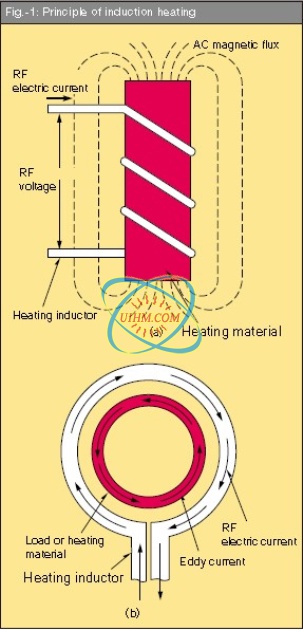
Principle of induction heating
Because of this, induction has a number of intrinsic trumps, such as a very quick response and a good efficiency. Induction heating also allows heating very locally. The heating speeds are extremely high because of the high power density.
Induction heating is the process of heating an electrically conducting object (usually a metal) by electromagnetic induction, where eddy currents (also called Foucault currents) are generated within the metal and resistance leads to Joule heating of the metal. An induction heater (for any process) consists of an electromagnet, through which a high-frequency alternating current (AC) is passed. Heat may also be generated by magnetic hysteresis losses in materials that have significant relative permeability. The frequency of AC used depends on the object size, material type, coupling (between the work coil and the object to be heated) and the penetration depth.
The principle of induction heating is mainly based on two well-known physical phenomena:
1. Electromagnetic induction
2. The Joule effect
Industrial Applications
Typical applications of induction are the melting of metals, the heating of metals for design, the brazing and welding and all sorts of surface treatments. However, by using electric conductive recipients (e.g. graphite) also other materials like glass can be heated.
* Melting of metals by means of induction crucible furnaces
An induction crucible furnace essentially consists of a crucible with refractory lining, that contains the material to be melted and that is surrounded by the induction coil. The coil is water-cooled and is surrounded by an iron core, in order to improve magnetic coupling.
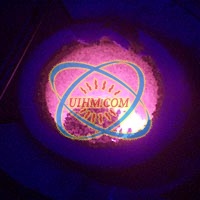
There are applications at 50Hz as well as mid-frequency applications. The power range (up to 10MW and more) and the specific powers (up to 1200 kW/ton) are extremely high. The melting can therefore occur very quickly.
Low-frequency induction crucible furnaces (50Hz) are usually applied for big applications (large power and large capacity). Mid-frequency furnaces are rather used in smaller applications. They offer more flexibility and are more compact. In general there is a trend towards using mid-frequency furnaces at the expense of low-frequency furnaces.
*Induction Brazing
Induction Brazing is an assembly technique where two pieces are joined together by means of a third material that is brought to its melting temperature. In the connection zone both pieces are heated up to a temperature higher than the melting temperature of the third material.
Induction is frequently applied because of the precise localisation of the heating. Moreover the heating happens very quickly which makes that the oxidation or structural or compositional changes can be controlled. Brazing under inert atmosphere is possible. Induction heating is suited for high production speeds in automatized production lines.
*Inductve hardening of steel
Steel with a carbon percentage of at least 0.3% is qualified for surface hardening. For this the workpiece is heated up to approximately 900°C and after that it is chilled. The technique is used for the hardening of gear wheels, crankshafts, valve stems, saw blades, spades, rails, and many other things.
The inductive process has the advantage that the treatment can be localised very accurately. Moreover, the chemical composition of the surface layer doesn’t change, which is the case for other surface hardening techniques. Because of the selective heating less energy is required than for a complete heating of the product and distortion can be avoided. Typical for inductive hardening are the very high energy densities (1.5 to 5kW/cm²) and the short treatment times (2 seconds).
Induction heating of 25 mm metal bar using 15 kW at 450 kHz.Induction heating allows the targeted heating of an applicable item for applications including surface hardening, melting, brazing and soldering and heating to fit. Iron and its alloys respond best to induction heating, due to their ferromagnetic nature. Eddy currents can, however, be generated in any conductor, and magnetic hysteresis can occur in any magnetic material. Induction heating has been used to heat liquid conductors (such as molten metals) and also gaseous conductors (such as a gas plasma – see Induction plasma technology). Induction heating is often used to heat graphite crucibles (containing other materials) and is used extensively in the semiconductor industry for the heating of silicon and other semiconductors. Supply frequency (mains, 50/60 Hz) induction heating is used for many lower cost industrial applications as inverters are not required
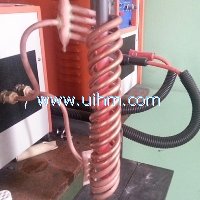
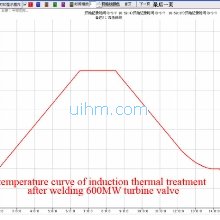
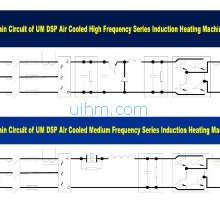
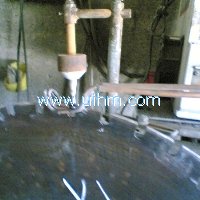
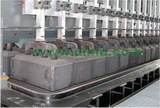
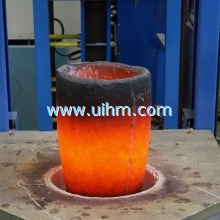

Newest Comment
No Comment
Post Comment